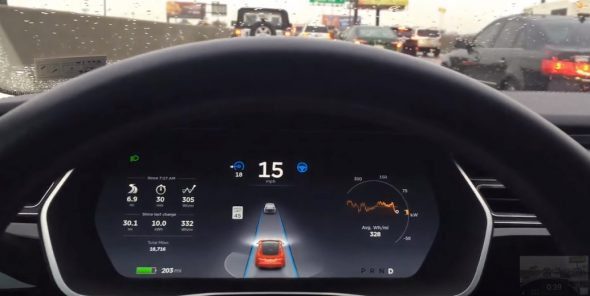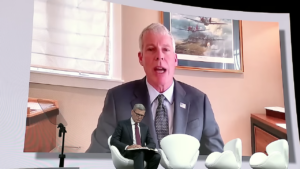Tesla Motors has announced a suite of updates to its electric vehicle autopilot system, a change the car maker says will amount to a “substantial improvement” in the safety of the technology recently linked to a fatal accident that killed a US Tesla driver.
The software updates – announced by Tesla founder and CEO Elon Musk on Sunday via the customary blog post – will see the technology depend more on radar signals to guide vehicles, and add safeguards to keep drivers engaged at high speed.

Musk said the updates – relevant only to Tesla vehicles built since October 2014, before which time the Autopilot wasn’t included – would be delivered to drivers over the air, via a software upgrade, over the next two weeks.
Tesla’s autopilot technology – which the company has previously stressed should be used only as an extension of cruise control, rather than as a hands-off, autonomous driving technology – has come under scrutiny since an accident in Florida in May, where a Tesla driver using autopilot ploughed into a truck at high speed.
In June, Tesla said of the crash – which is being investigated by America’s National Highway Traffic Safety Administration – that “neither Autopilot nor the driver noticed the white side of the tractor trailer against a brightly lit sky,” so the brakes were never applied.
The government has also said in a preliminary report that Brown’s Tesla was traveling at 74 miles (119 kilometers) per hour in a zone where the limit was 65 mph (100km/h).
In his blog post on Sunday, Musk said that the software update meant the radar function, which was originally added as a supplementary sensor to the primary camera and image processing system, could now be used as a primary control sensor without requiring the camera to confirm visual image recognition.
“The net effect of this,” Musk said, “combined with the fact that radar sees through most visual obscuration, is that the car should almost always hit the brakes correctly even if a UFO were to land on the freeway in zero visibility conditions.
“I am highly confident this will be a substantial improvement,” he said later in a conference call with reporters, reportedly adding that the enhanced radar even may have been enough to prevent the Florida accident.
“Ultimately, this will probably be a threefold improvement in safety,” he said in the conference call. “This is not going from bad to good. It’s going from good to, I think, great.”
Another significant change with the update will be applied to the technology Tesla calls Autosteer. While doing what the name suggests, the technology was also designed to encourage drivers to keep their hands on the steering wheel. The update means that if drivers fail to put their hands back on the steering wheel after repeated warnings, the car will switch on its hazard lights, slow down and come to a stop. Autosteer will not be able to be reengaged until after the car has been parked.
Other elements of the update include controls for two cars ahead using radar echo, improving cut-out response and reaction time to otherwise-invisible heavy braking events; automatic use of highway exit if car indicator is on (8.0) or if nav system active (8.1); more prominent interface alerts; improved cut-in detection; improved auto lane change availability; and “approximately 200 small enhancements that aren’t worth a bullet point.”










